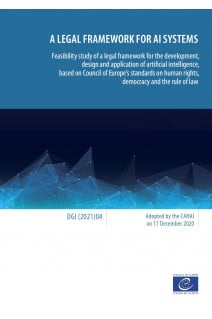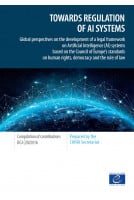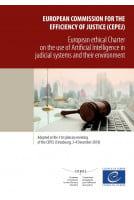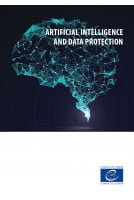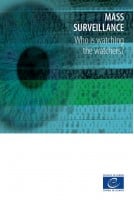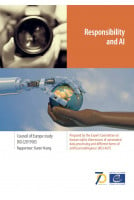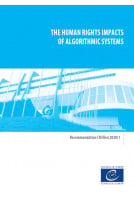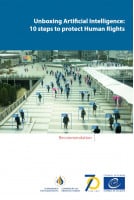1. GENERAL INTRODUCTION 2. SCOPE OF APPLICATION OF A COUNCIL OF EUROPE LEGAL FRAMEWORK ON ARTIFICIAL INTELLIGENCE 3. OPPORTUNITIES AND RISKS ARISING FROM THE DESIGN, DEVELOPMENT AND APPLICATION OF ARTIFICIAL INTELLIGENCE ON HUMAN RIGHTS, THE RULE OF LAW AND DEMOCRACY
3.1. Introduction
3.2. Opportunities arising from AI
3.3. Impact on Human Rights, Democracy and the Rule of Law
3.4. A contextual and risk-based approach to govern AI
4. THE COUNCIL OF EUROPE’S WORK IN THE FIELD OF ARTIFICIAL INTELLIGENCE TO DATE
4.1. Work in the field of protection of personal data
4.2. Work in the field of cybercrime
4.3. Work in the field of algorithmic systems
4.4. Work in the field of justice
4.5. Work in the field of Good Governance and elections
4.6. Work in the field of gender equality and non-discrimination
4.7. Work in the field of education and culture
4.8. The work of the Parliamentary Assembly of the Council of Europe
4.9. The work of The Congress of Local and Regional Authorities of the Council of Europe
4.10. The work of the Commissioner for Human Rights
4.11. The work of the Council of Europe in the field of youth
4.12. The case law of the European Court of Human Rights relating to information technology
5. MAPPING OF INSTRUMENTS APPLICABLE TO ARTIFICIAL INTELLIGENCE
5.1. International legal instruments applicable to artificial intelligence
5.2. Ethics Guidelines applicable to artificial intelligence
5.3. Overview of national instruments, policies and strategies related to artificial intelligence
5.4. Advantages, disadvantages and limitations of existing international and national instruments and ethical guidelines on artificial intelligence
5.5. International legal instruments, ethical guidelines and private actors
6. MAIN CONCLUSIONS OF THE MULTI-STAKEHOLDER CONSULTATIONS 7. MAIN ELEMENTS OF A LEGAL FRAMEWORK FOR THE DESIGN, DEVELOPMENT AND APPLICATION OF ARTIFICIAL INTELLIGENCE
7.1. Key values, rights and principles deriving – in a bottom-up perspective - from sectoral approaches and ethical guidelines; in a top-down perspective - from the requirements of human rights, democracy and the rule of law
8. POSSIBLE OPTIONS FOR A COUNCIL OF EUROPE LEGAL FRAMEWORK FOR THE DESIGN, DEVELOPMENT AND APPLICATION OF ARTIFICIAL INTELLIGENCE BASED ON HUMAN RIGHTS, DEMOCRACY AND THE RULE OF LAW
8.1. Modernising existing binding legal instruments
8.2. Adoption of a new binding legal instrument: Convention or Framework Convention
8.3. Non-binding legal instruments
8.4. Other type of support to member States such as identification of best practices
8.5. Possible complementarity between the horizontal and cross-cutting elements that could form part of a conventional-type instrument and the vertical and sectoral work that could give rise to specific instruments of a different nature
9. POSSIBLE PRACTICAL AND FOLLOW-UP MECHANISMS TO ENSURE COMPLIANCE AND EFFECTIVENESS OF THE LEGAL FRAMEWORK
9.1. The Role of Compliance Mechanisms
9.2. The Role of Different Actors
9.3. Examples of Types of Compliance Mechanism
9.4. Follow-up mechanisms
10. FINAL CONSIDERATIONS
